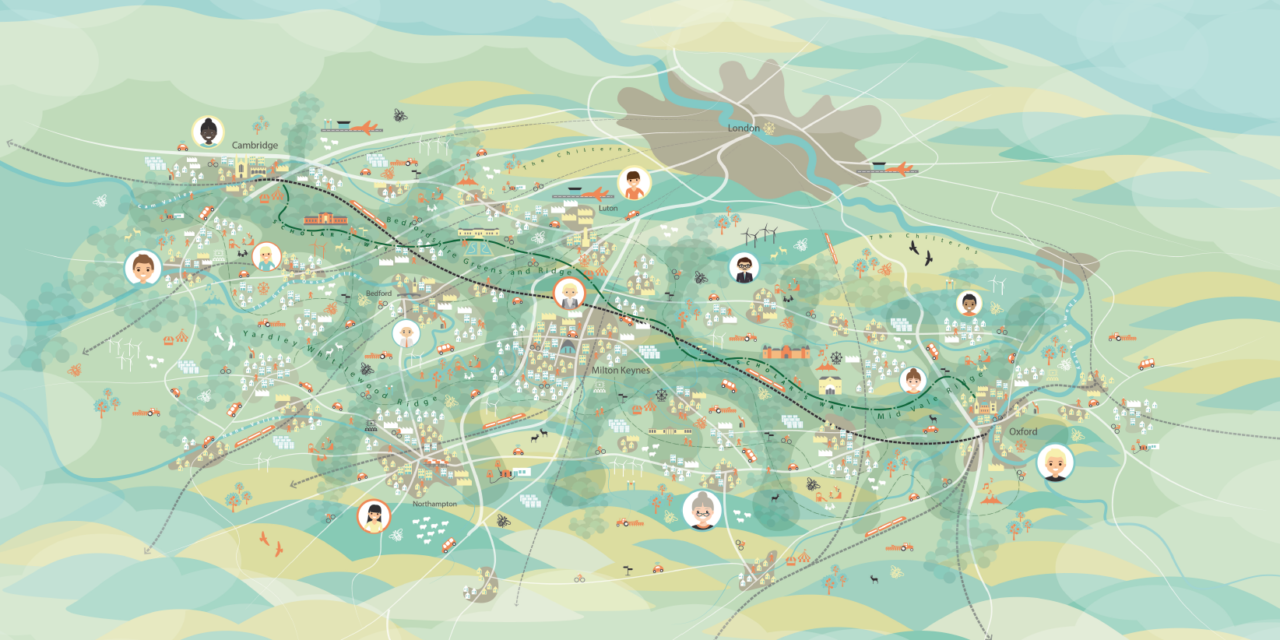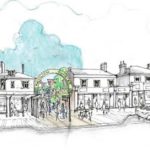The launch of the Government’s consultation on the Oxford-Cambridge Arc has prompted a positive response from widely-varied experts among Thames Tap’s partners, contacts and supporters.
But there is a warning about how much the wider population is aware of the Arc.
The 12-week engagement event, the first of three public consultations on the Arc, was launched last week and will help create the Spatial Framework’s vision for the area to 2050.
We have compiled the views of some of the leading voices in the region, starting with David Bainbridge and Katriona Ormiston-Rees at Savills Oxford, who offer a context.
They said: “The Oxford-Cambridge Arc is seen by Government as a national economic priority area, with potential to be one of the most prosperous, innovative and sustainable economic areas in the world.
“The Arc covers the ceremonial counties of Oxfordshire, Buckinghamshire, Bedfordshire, Northamptonshire and Cambridgeshire. This comprises three county councils, 17 district councils, six unitary authorities and the Cambridgeshire and Peterborough Combined Authority.
“The Spatial Framework will set national planning policy and national transport policy for the area and all new local plans will be expected to be consistent with the new policy, which is understood to be published in final form in early 2023.
“In the meantime the chief planner at MHCLG has encouraged all local authorities to continue to make progress on emerging local plans and not to wait for the Spatial Framework.
“As expected, at this stage there are no specific policy proposals, growth ranges or targets or spatial areas identified for growth.
“The consultation is mostly concerned with establishing certain principles, such as in relation to the environment, biodiversity, design, resource management and climate change.
“There is a growing database for the Arc which has informed the vision and associated documentation including preparation of a Local Natural Capital Plan for the Arc and identification of Environmental Opportunity Zones.
“This consultation follows significant stakeholder engagement by the Oxford-Cambridge Arc Unit within MHCLG and partners. As pointed to in the Autumn 2020 Planning White Paper: Planning for the Future, the Government intends to engage more collaboratively and be more digital in the way it communicates.
“The Spatial Framework can help develop an Economic Strategy, building on work put in by Local Enterprise Partnerships and others including on Local Industrial Strategies. The vision is for a range of employment opportunities where education and skills are linked.
“Response to the consultation will inform the Spatial Framework’s vision for the area to 2050, and will help guide local planning and investment decisions in four areas: the environment; the economy; connectivity and infrastructure; and place-making.
“This is especially relevant coming on the same day that the Ministry of Housing, Communities and Local Government (MHCLG) published a revision to the National Planning Policy Framework and launched a National Model Design Code under the Building Beautiful Places initiative.
“Following this consultation, in Spring 2022, Towards a Spatial Framework will be published which is intended to be an interim document setting out options for policy and launch of the second public consultation. Then in Autumn 2022, MHCLG will publish a draft Spatial Framework alongside a third public consultation.
“We welcome the Government’s continued commitment to collaborative, inclusive and digital-based engagement on the emerging Spatial Framework for the Oxford-Cambridge Arc and encourage everyone to consider responding to the consultation.”
Johnathan Headland, urban design associate for architectural practice WWA, said: “The return of proper regional strategic planning can only be a good thing and this 12-week digital consultation is the first real step towards the spatial framework for the Arc.
“Ahead of the launch of this consultation care has been taken by Government to distance itself from the early clumsy handling and unofficial strap lines of one million new homes and the Expressway. A renewed focus on four key areas, the economy, the environment, infrastructure and placemaking, is the order of the day.
“One thing is for sure; given the wide-ranging extent and considerations of the Arc, a co-ordinated approach will not happen without the Spatial Framework and its subsequent influence on individual Local Plans.
“I look forward to seeing the outcome of this consultation, with the policy options published in Spring next year and the draft Spatial Framework following on in the Autumn. Could this mark the return of regional strategic planning in other areas of England? I certainly hope so.”
Michael Knott, partner at Barton Willmore, said: “At a time when the Government’s national planning reform agenda is struggling for traction, the Arc feels different, positive and like it is really starting to gather momentum.
“It’s a crucial growth opportunity and it’s important that businesses, including the development industry, get involved to have their say through this consultation. Clearly, the more they engage, the better the outcome. If we want a ‘transformational growth’ strategy we need to see participation and buy in.
“Getting to consultation on the vision for the Spatial Framework is a big step forward for the Arc. It takes us closer to ultimately realising its ambition.
“For Oxfordshire specifically, this is also well-timed as it lands alongside the Oxfordshire Plan (Regulation 18 Part 2) consultation which is due to start at the end of July.
“I am in the camp that is disappointed not to see more detail in terms of a preferred strategy emerging but, taking the positive perspective, this means engaging at this stage can be more influential and a stronger opportunity to influence decision making. Let’s hope so!”
Mark Gay, planning director for luxury housebuilder Hayfield, said: “It is good to see the proposals for the Spatial Framework moving forwards, particularly given the Government’s recent publication of a revised National Planning Policy Framework which further emphasises the importance of longer-term spatial planning.
“This is a positive next step for the Arc and we hope the consultation process will result in the progression of a cohesive plan that can be seamlessly delivered by each local authority across this expansive, much sought-after area of middle England.
“Hayfield has been proactively targeting sites across each of the counties – Oxfordshire, Buckinghamshire, Northamptonshire, Bedfordshire and Cambridgeshire – for over four years.
“In 2019, we opened a new office in Milton Keynes in order to service the number of live developments we have in this area, together with the sites we are currently progressing through the planning system.
“We look forward to contributing to the consultation process and would welcome the opportunity to engage with the expert advisory panel.”
David Foster, director of land, partnerships and pre-construction at Catalyst Housing, said. “It is critical the Spatial Framework supports the right mix of homes for the region – and that sustainability sits at the heart of decision making for the Arc.
“The Arc’s contribution to the UK’s tech and innovation economies is unrivalled. But to help these sectors thrive in the years ahead, we must prioritise providing the community infrastructure and housing needed to ensure it is an affordable and viable place to live and do business.
“This means putting the Arc at the forefront of the charge to net zero and ensuring development is done sensitively and with the support of existing communities.
“Effective consultation and engagement is central to what Catalyst does – and with so much hard work and good thinking already done on the vision for the Arc, I hope that this consultation will help us and the wider sector to better understand what the area’s communities want and need.”
Rob Allaway, managing director of DevComms, said: “It’s great that the Government momentum that started with the policy paper in February is staying on track with the launch of this consultation. This leadership at the national level is required if the project is to be meaningful.
“Collaboration is the cornerstone of the Government’s approach to policy making on the Arc but we will have to see how this plays out. There are mixed levels of participation across local authorities.
“Buckinghamshire has declined to be part of the Arc Leaders’ Group and the council leaders in the Southern Oxfordshire authorities are striking a cautionary tone in their statements around the consultation.
“The Government is doing the right thing by being more innovative with consultation through digital platforms to reach more people. But there is a challenge. The Ox-Cam Arc is high profile within political and certain industry circles, but there is a low level of awareness amongst the wider population.
“Local authorities will have an important role in shaping the conversation with their own communities. Fewer than half have actually publicised the current consultation on their own websites – so more joined up communication is needed as matters progress.”
Image supplied by Barton Willmore.
© Thames Tap (powered by ukpropertyforums.com).
Sign up to receive your free weekly Thames Tap newsletter here.

















